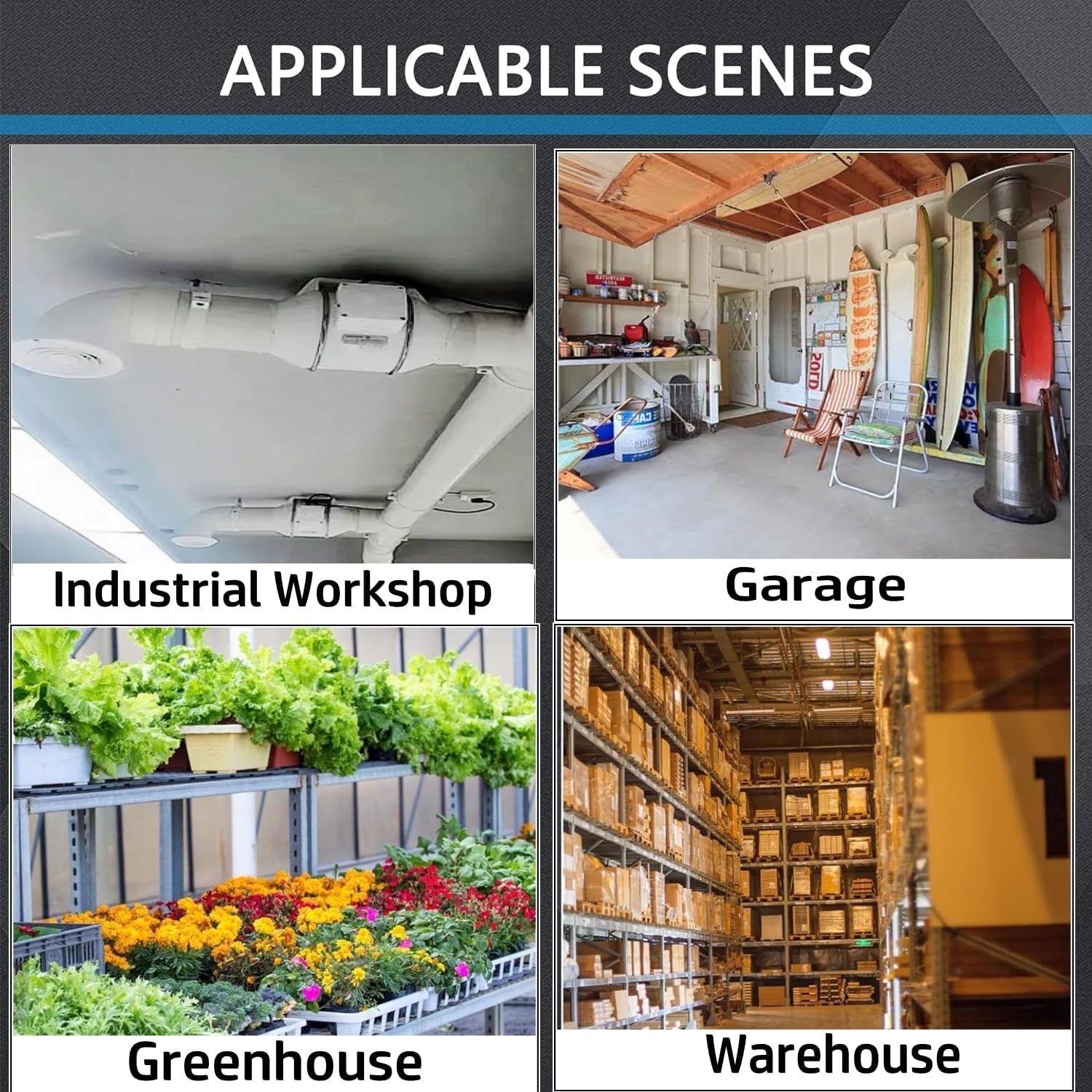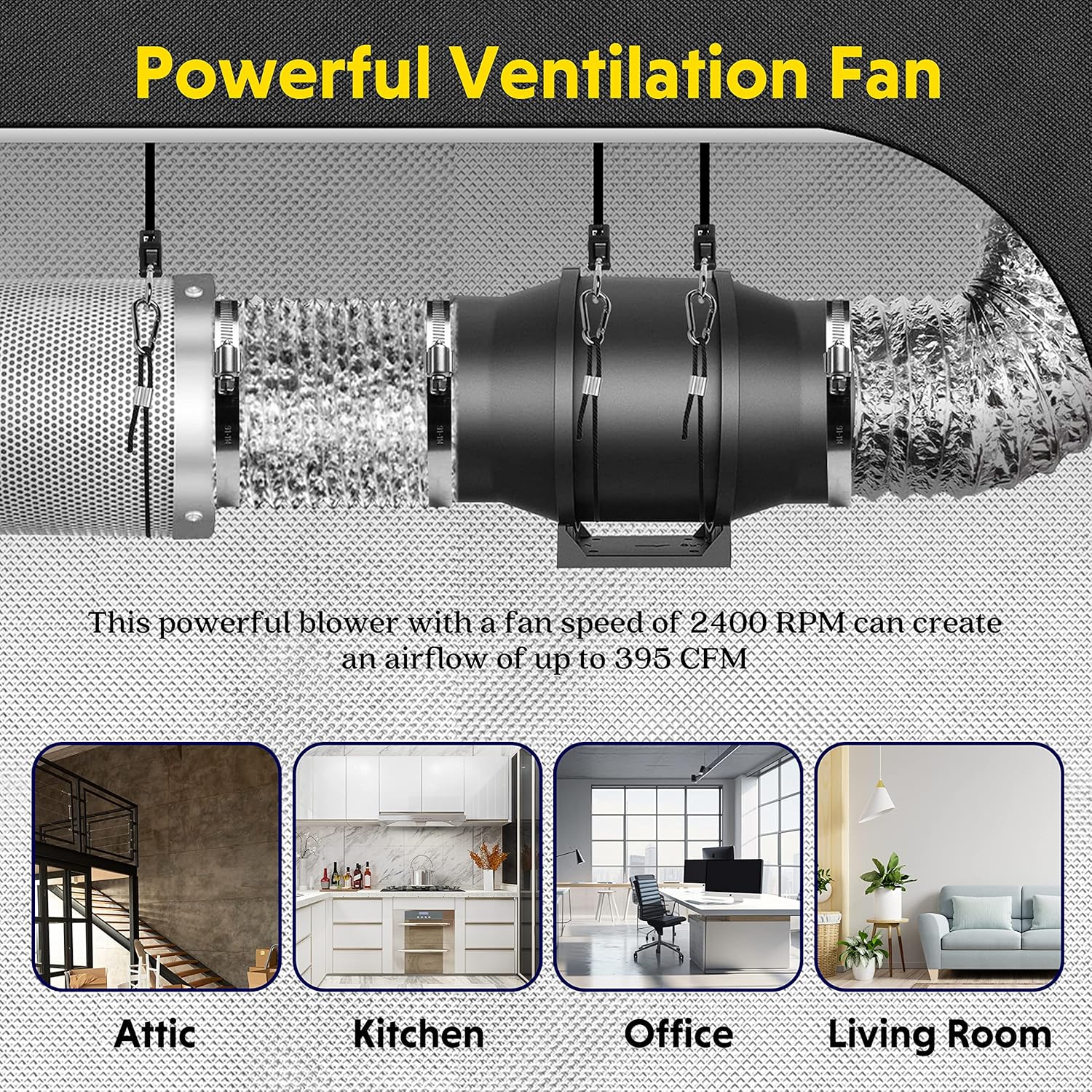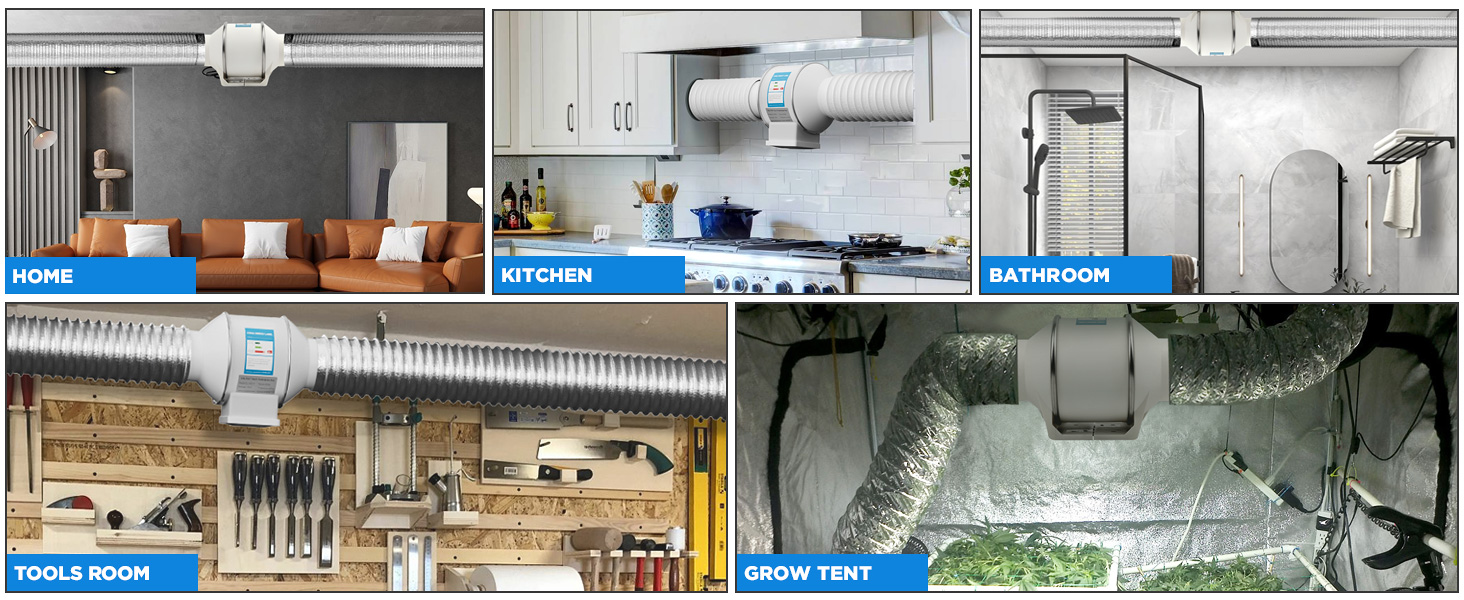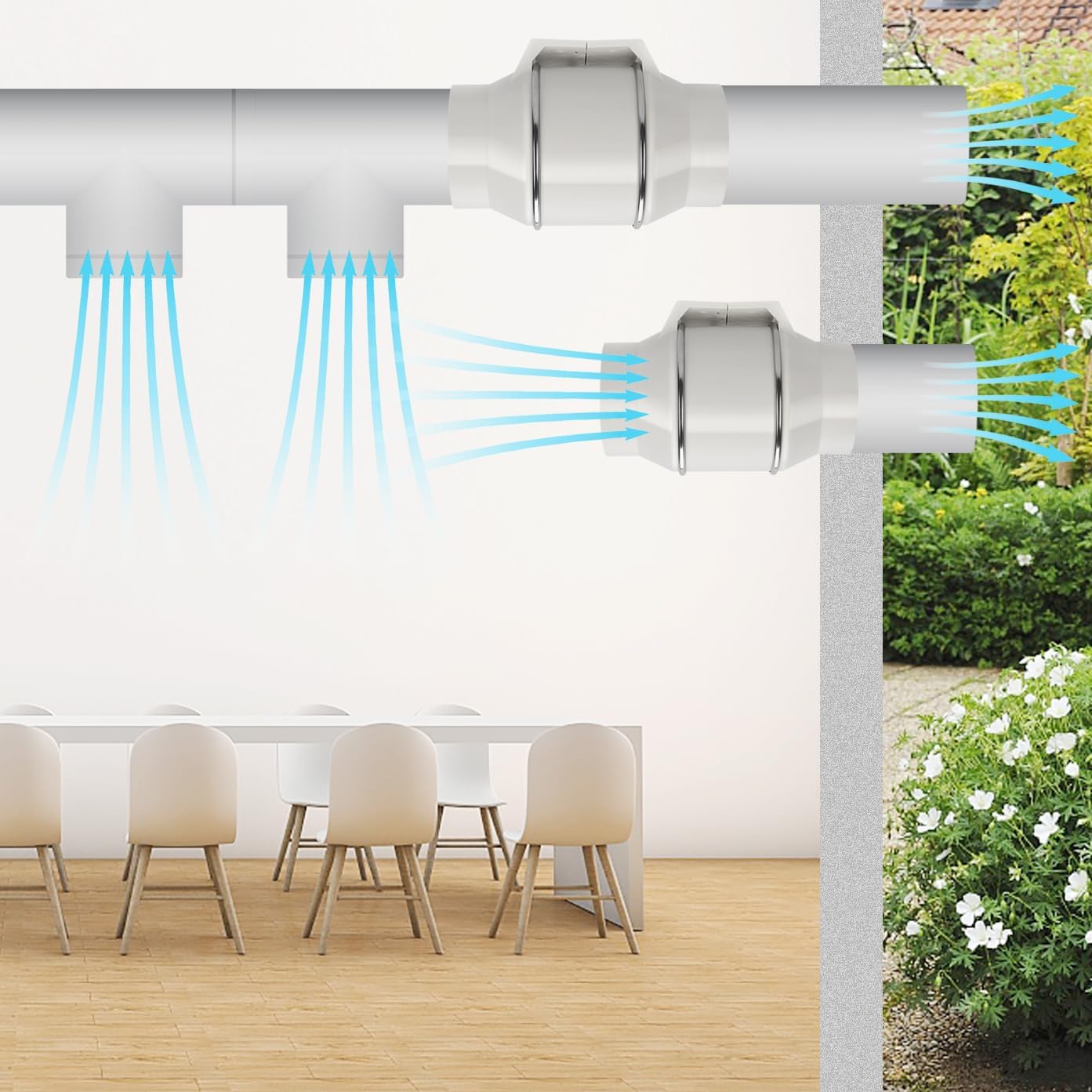The evolution of air movement: the introduction of silent inlined tube fans
The search for improved indoor air quality has led to significant innovations in ventilation technology. Among them, silent inline tube fans are a key component of modern houses and commercial spaces, providing effective air circulation integration without the destructive noise often associated with traditional fans. With awareness of the impact of environmental sound on comfort and productivity, these professional fans have become essential in creating tranquil and healthy environments. Whether you upgrade an existing system or design a new system, understanding the nuances of different inline fan fans is the key to making an informed decision.
Quiet Attraction: Why choose a quiet fan fan?

The term “quiet fan” is often seen when considering ventilation, for good reason. Traditional ventilation systems can be an important source of background noise, affecting everything from the quality of sleep in the bedroom to the concentration of the office. In contrast, the silent inline tube fan is designed with advanced motor technology, aerodynamic blade design and materials that often run at the whisper-low-dB level. This quiet operation is the main difference. For example, in areas such as home offices, recording studios, libraries, and even planting plants that can be sensitive to tents, minimizing noise is crucial. Product information often takes “whispering” as a key feature, making it ideal for a peaceful and focused environment that is essential, in contrast to older, more clumsy ventilation solutions.
Performance indicators: Use high CFM tube fans to balance silence and strength
Although silence is a precious property, it cannot come at the expense of performance. This is where high CFM pipe fans become relevant. CFM or cubic feet per minute, measuring the amount of air the fan can move. Higher CFM often means better ventilation, able to handle larger spaces or areas with greater air purification needs, such as kitchens with cooking smoke or workshops with chemical vapors. The challenge has always been combining high airflow with low noise. Modern silent inline duct fans, such as the innovative models available, are designed to address this challenge. They can act as effective internal blowers that move a large amount of air without roaring. This is no longer a strict trade-off; advanced engineering allows for strong air exchange even in quiet fan fans, ensuring that the space is not only quiet but also properly ventilated. The key is the integrated design, where motor efficiency, blade shape and housing all lead to strong airflow and minimal sound output.
Application versatility: Inline conduit fan for every requirement
Inline conduit fans are very diverse applications, from compact residential solutions to robust commercial systems. For smaller areas or specific spot ventilation, a small inline fan fan provides targeted airflow without attracting attention. These are perfect for bathrooms to cope with humidity or maintain optimal atmospheric conditions in small growing tents. Commercial fan fans, on the other hand, are built for more demanding environments such as large offices, restaurants, cafeterias or industrial libraries that require consistent, powerful air movement over a larger network of pipes. The beauty of modern inline fans, including silent variations, is their adaptability. As can be seen from product details, a well-designed fan caters to the kitchen, basement, office, bathroom, and even a dedicated tool room or planting tent, demonstrating the versatility of its multiple environments. This versatility emphasizes how inline duct fans are tailored to specific needs, whether it is a high CFM tube fan for busy workshops or a small inline duct fan for comfortable home offices.
Key Difference: Silent Models vs. Their Standard Correspondence
Comparing a professional quiet fan with a standard inline fan reveals several key differences beyond noise levels. While both are designed to be installed in pipes, silent models often combine more complex engineering and materials. Standard fans may prioritize raw power or reduce upfront costs, which can sometimes lead to higher operating noise. In contrast, quiet fan fans focus on the overall user experience. This includes:
1. Noise output: main difference. The silent model is barely perceived noise levels, which significantly enhances the comfort.
2. Design and Build Quality: Silent fans often feature a streamlined design and durable housing, as described in the product information provided to minimize vibration and airflow turbulence that contribute to noise. This thoughtful design also extends to ease of installation, as these fans are often developed for seamless integration into existing pipelines, minimizing setup hassle.
3. Energy Efficiency: Many silent inline fans (such as the “Energy Awareness Design” model mentioned in the product examples” are also designed to reduce energy consumption, providing long-term savings and reduced environmental footprints.
4. Vibration Damping: Features such as professionally installed brackets or internal components are often used to reduce vibration transfer to the pipes and surrounding structures.
While a standard fan may be enough to accommodate noisy workshops or unattended lofts, the benefits of advanced models become critical in the occupied space.
Choose your ventilation partner: Quality and expertise
When choosing an inline tube fan, whether it is a powerful commercial fan or a discreet small inline fan fan, the provider is important. Companies like Ningbo Aoshun Electrical Co., Ltd. have the flexibility to have important advantages in purchasing, designing and producing innovative electrical products. Their commitment to customer-supplier relationships, coupled with strategic logistics investments, ensures that customers receive excellent service and high-quality products. Selecting a supplier that provides a “one-stop-buy” experience for all electrical needs, including a range of ventilation fans and accessories, simplifies this process. This ensures that you not only want to buy fans, but also invest in reliable solutions powered by expertise, whether you need high CFM fan fans for industrial use or quiet conduit fans for comfort. Their wide range of business includes a variety of fan types, which means they understand the subtle requirements of different applications.
Conclusion: Embrace the quiet efficiency in air management
In short, the modern quiet inline fan represents an important step in ventilation technology, which provides a compelling alternative to its voice. It skillfully balances the need for effective air exchange – the correlation provided by Akin with a powerful inline blower or high CFM ducted fan – the desire is associated with a quiet environment, often with dedicated quiet fan fans. Its application is widely used and seamlessly suits residential and certain commercial fan scenes, from compact small inner tube fans in the bathroom to more substantial units in the office. When choosing an inline conduit fan, considering noise levels, energy efficiency, and the specific needs of your space will lead to a more comfortable and healthier environment. The evolution of these fans emphasizes the commitment to not only improve air quality, but also enhance overall quality of life.






